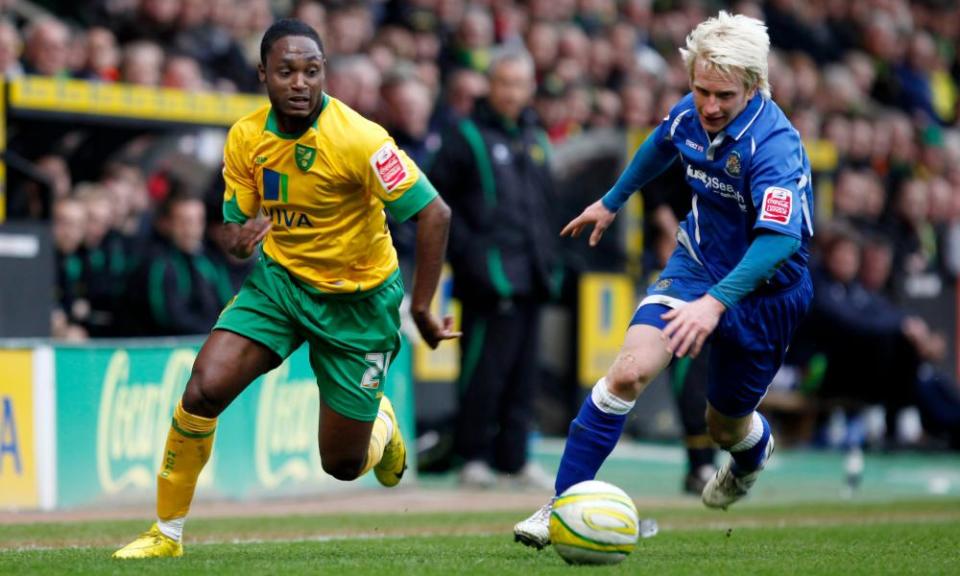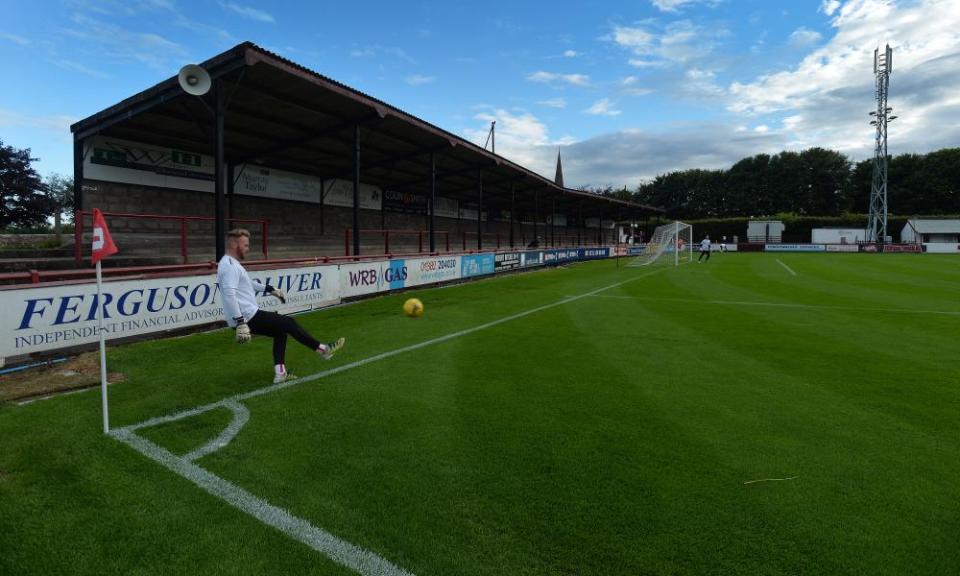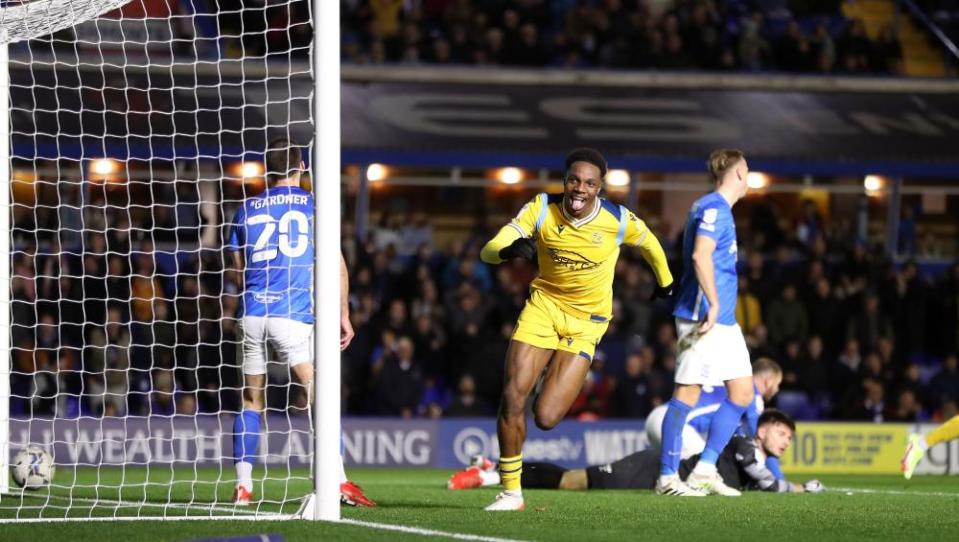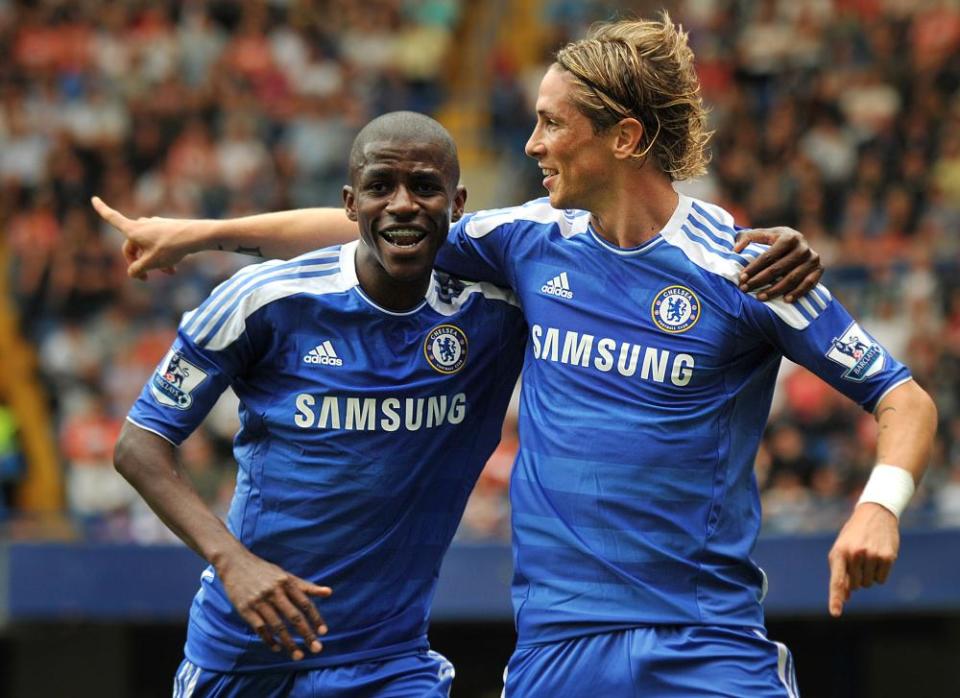Wild two-year twists of fate for football clubs in the third tier

“Has there ever been an instance of two teams meeting in the English third tier, with one going on to suffer successive relegations and the other going on to achieve successive promotions so that, two seasons later, one team was non-league and the others in the top flight?” asks Jake Lennon. “If not, what’s the closest we’ve had? Or has the equivalent happened overseas?”
The short answer is yes – with Mark Tollerton the first of many to nominate Norwich and Stockport. “They finished at opposite ends of the League One table in 2009-10,” he recalls. “Norwich finished second in the Championship the following season while Stockport were bottom again, of League Two, completing journeys to the Premier League and the Conference (as it was still called then). In addition, the Canaries managed to stay in the top flight for three seasons while County were relegated again to the Conference North, so in 2013-14 the two sides were competing five divisions apart.”
Chris Roe highlights the mid-80s as a fertile period for third-tier teams heading in different directions. Derby County and Lincoln City met in the 1985-86 season. “Both were in Division Three but by 1987-88 Derby were Division One and Lincoln were in the Conference (fifth tier),” writes Chris, who also points out that Middlesbrough and Newport County did the same, with Boro heading to the promised land in two seasons and Newport plummeting into the non-league wilderness.
Mick McMenemie offers a notable rapid change of fortunes for two clubs in Scotland. “Livingston and Brechin played each other in the Scottish third tier in 2016-17 and both got promoted to the second tier. The next year Livingston got promoted again. Brechin never won a match and finished bottom. They then finished bottom of the third tier … then bottom of the fourth, but were saved from relegation by Covid-19. They finished bottom the next season anyway and now sit in the Highland League (regional fifth tier). While their former third-tier buddies, Livingston, beat Celtic at home, Brechin have been losing to the likes of Inverurie Loco Works.” It’s not quite the two-season four-division swing of the examples above but definitely worth noting.

Paul Brack points out that, but for goalkeeper Jimmy Glass’s famous intervention, Watford and Carlisle would have been a perfect example: “In 1997-98, Watford won Division Two (third tier) while Carlisle finished 23rd and were relegated. In 1998-99, Watford were promoted to the Premier League via the play-offs. Carlisle were on course to drop into non-league on the final day, before Glass scored to rescue them.”
Ross White recalls (along with others) a dramatic shift in circumstances for Leicester City and Yeovil Town. “On 25 March 2014, Yeovil led away at Leicester from the 22nd minute, before being denied by a Chris Wood header two minutes into second-half stoppage time. Two years, one month, and 12 days later, Leicester lifted the Premier League trophy as champions. On the same day, Yeovil lost 1-0 at home to Leyton Orient, confirming their 19th-place finish in League Two – 86 places below their former adversaries.”
A brace wearing braces
“Reading academy graduate Jahmari Clarke notched his first two senior goals in an away win over Birmingham – and upon watching his post-match interview I noticed a completely irrelevant detail – he has braces,” writes Calum Pettitt. “Is he the first player to ever score a brace while wearing braces?”

He’s not. A brilliant spot from reader Louis Ostrowski, who pointed us in the direction of Chelsea’s 4-1 win over Swansea in 2011, when Ramires did just that.

Outfield players shining in goal (2)
In last week’s Knowledge, we looked at emergency keepers who used their hands to good effect. And there’s more. “You missed ‘Long’ John Hewie, Charlton and Scotland who often went in goal when Mickey Duff was either injured or sent off, no subs allowed,” writes Clive Denny. “He was a full-back but during his time at Charlton started in every position and was selected four times as the goalkeeper.” And we thought James Milner was versatile. If you’d like to know more about Hewie, there’s a good piece in Nutmeg.
Philip Skeldon has written in with another terrific example from back in the day. “I think you should include Con Martin of Aston Villa in the 1950s,” he suggests. “When the regular goalie, Joe Rutherford, was injured, Con stepped up and played 26 league matches and one FA Cup tie in the 1951-52 season. He originally played Gaelic football which developed his handling skills. He was offered a contract as a goalie by Manchester United but opted to join Leeds as a centre half, later moving to Villa. He was one of my heroes as a young fan. I always remember him as enjoying himself with a broad grin. We badly need that spirit today.”
KF Tirana midfielder Ali Mema surely had a broad one on his coupon when he starred in the Albanian cup final of 1963. “Mema managed to save three penalties in the shootout of the Albanian Cup final, which they won against KF Besa,” writes Erblin Maçi. “The match went to penalties after a two-legged final. KF Tirana’s regular keeper Metani was injured during the game and the substitute Beliu was injured in extra time, so Mema went in goal for the shootout. He saved three penalties from Thabit Rexha (at the time a single player could shoot all the penalties for a side) and KF Tirana managed to win 5-1. Here’s an excerpt from the local paper.”
Hang on, in Albania in 1963 they a) had sub goalkeepers and b) allowed one player to take all the penalties? Truly, we had no idea. Anyone got any other local, historical peculiarities to report? Get in touch if so.
Knowledge archive
“Driving past Colchester United’s ground the other day I remarked to myself how close it was to the A12 – seemingly less than a goal kick from the road. Also, the stands are not the biggest, and it’s not a ‘bowl’ stadium, so I reckon it’s very possible to kick a ball out of the ground on to the A12,” mused Philip Genochio in 2011. “So two questions: Has a ball yet been kicked out of the ground on to the A12 and can any other stadium lay claim to being closer to a major road?”
Well, no one has managed to reach the A12 from the Western Homes Community Stadium thus far, said Colchester United, although David Prutton did once belt the ball out of the stadium in the process of being sent off against Tranmere. The ground, though, was built with safety in mind, and the distance between stadium and road carefully calculated.
Plenty of grounds share Colchester’s proximity to a major throughfare. The A23 in Crawley is certainly a road to avoid on a Saturday afternoon: “Broadfield Stadium is situated right next to the A23 and that is without even a stand separating them,” wrote Jamie Morrison. “Rather there is a net but that is regularly cleared by the non-league defenders’ efforts to put the ball into touch.”
Can you help?
“The Premier League table now has only four teams with a positive goal difference. Is this the fewest ever with a positive difference?” wonders David Ellemor-Collins.
Question for @TheKnowledge_GU Will Keane has scored as many league goals in the last 9 months (14) as he did in the preceding 9 years of his career to date. Is there a striker with a larger time disparity between scoring the same number of goals?
— Gaz F (@gazlatic) November 29, 2021
“Would Eddie Howe’s Bournemouth-Newcastle journey be the longest intra-England managerial move ever?” asks Richard Powell.
What’s the earliest goal scored in a game that finished 1-0?
— Agatiefan (@AgaTieFan) November 30, 2021
“In the last round of Champions League games, Atalanta’s No 91 (Duvan Zapata) scored against Young Boys’ goalkeeper (Guillaume Faivre), who was also sporting No 91. Is this the highest instance of someone scoring against their opposite number?” muses Jim Hearson.
Mail us your questions or tweet @TheKnowledge_GU. And now we’re in December, be sure to send in any festive-themed ones too.

 Yahoo Movies
Yahoo Movies 